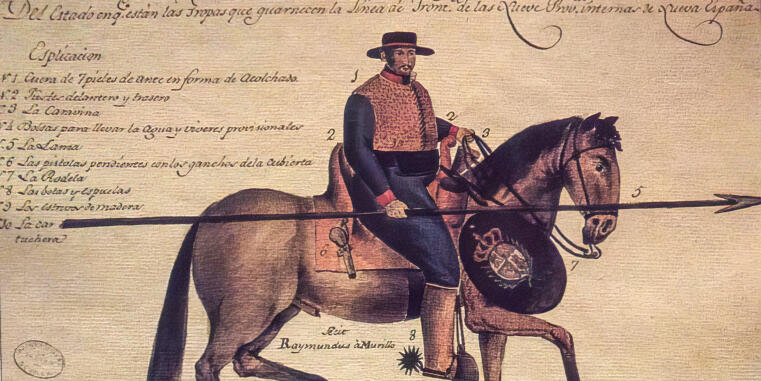

Colonial rule on site: the district administration of indigenous regions in New Spain and Peru in the 18th century
Spanish America represented a paradigmatic case of xenocracy, which followed a cultural first contact and was characterized by long lasting perceptions of foreignness. The Spanish colonial empire lasted for three centuries. Different American societies had to be integrated.
The populations grouped together as indigenous were legally and administratively separated from the population of Spanish descent. They were joined by people of African descent and soon also by descendants from exogamous unions. Spanish rule was stabilized through a differentiated administrative structure in which the attribution of foreignness played an important role in the treatment of different population groups.
When the Bourbon reforms initiated far-reaching administrative changes in the second half of the 18th century, the local administration had to be renegotiated due to the intensification of colonial control and exploitation, but also due to the introduction of new administrative levels such as the army command and the associated reorganization of the district administration, so that foreign attributions were sometimes exacerbated.
This subproject examines local administrative practice in indigenous, rural districts of the Spanish colonial empire at the lowest level of the crown administration in the two most important parts of the empire, New Spain and Peru. It examines which categories of difference based on foreignness were important in administrative practice, how these changed in the course of the comprehensive reforms of the colonial administration and what significance attributions of foreignness had in the negotiation processes between the local population and officials.
On the one hand, the responsible officials were direct representatives of xenocratic rule, which they inscribed locally through symbolic acts and specific forms of communication. They were integrated into social networks and had the task of maintaining order and organizing jurisdiction, the collection of tribute and the distribution of labour obligations. On the other hand, they had to deal with indigenous agency and resistance on the ground and were involved in processes of cultural change. The resulting tensions had to be balanced in order to stabilize colonial rule.
With this perspective, which closely follows the research group's horizons, it will be argued that in New Spain and Peru, constructions of foreignness were negotiated in a conflictual, fluid and productive field of tension characterized by powerful inscription on the one hand and appropriation and agency of the population on the other.
Members
News
- Workshop: „Theoretical approaches on xenocracy in the premodern era“
- Lecture on „Categorizaciones flexibles y procesos de negociación entre la administración y la población. Oaxaca, México, ca. 1750-1850” by Silke Hensel
- Lecture on “Alteridad y poder en Nueva España: La categorización administrativa de la población en el siglo XVIII.” by Silke Hensel
- Lecture on “Local Practices of Colonial Rule: The Civil Service in the Territorial Administration of New Spain at the Lowest Level (Oaxaca 1786-1821)” by Silke Hensel
- Lecture on “Cambios administrativos y negociaciones de poder en Oaxaca, finales del siglo XVIII a principios del XIX” by Silke Hensel
- Lecture on “Between Coloniality and Self-Assertion: Local Administration in Northern Peru in the Late Colonial Period, 1800-1820”
- Lecture on “Empire, Religion, and Local Administration in Northern Peru (1750–1820)” by Frederik Schulze
- Research colloquium „Foreignness/ perceptions of foreignness“
- Colloquium of the Ph.D. students
- Lecture on „La influencia de la población rural en la formación del estado, Oaxaca finales del siglo XVIII a principios del XIX“ by Silke Hensel
- 2. Meeting of the subproject leaders
- 1. Meeting of the subproject leaders

